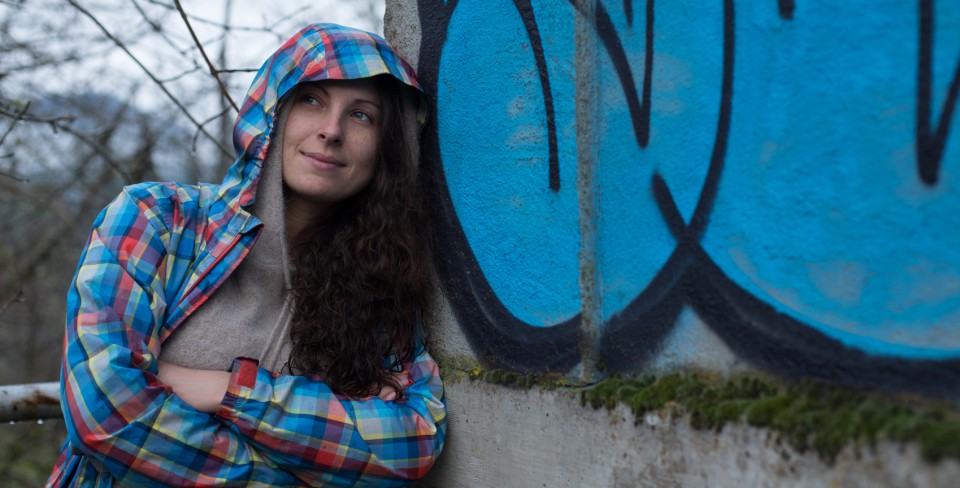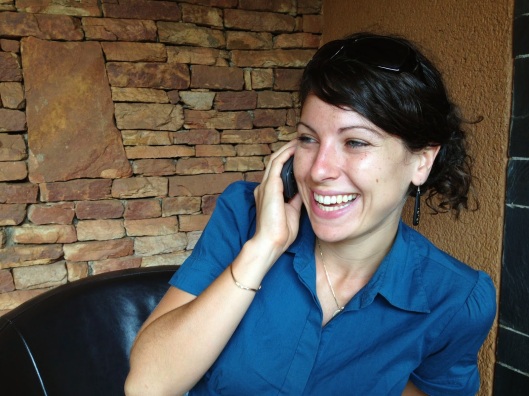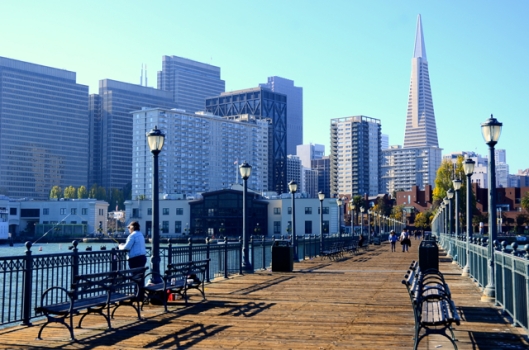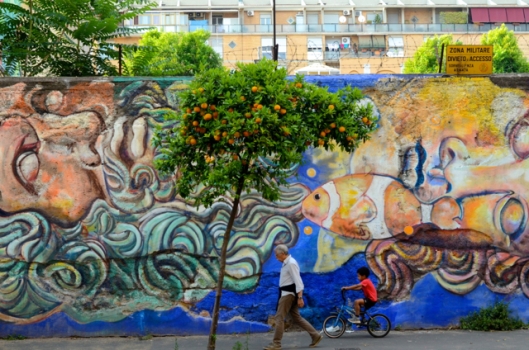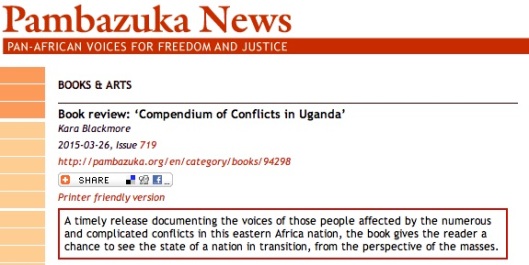
“Until lions write their own history, the history of the hunt will always glorify the hunter.”
This quote, popularised by Chinua Achebe, highlights the enduring need for stories to be told from lesser known perspectives. That is exactly what Refugee Law Project’s (RLP) newly released Compendium of Conflicts in Uganda attempts to do. In the absence of a national truth-telling process, this more-than 300 page text invites the reader to see the state of a nation in transition, from the perspective of the masses. It comes out of a National Reconciliation and Transitional Justice (NRTJ) Audit conducted across 20 districts with nearly 600 hours of dialogue. This review attempts to give a sense for the text by outlining some of the many and varied episodes in Ugandan history which participants have covered in the making of this book.
In the foreword we are told by RLP’s director, Dr. Chris Dolan, that “Establishing the truth can only ever be a work in progress.” With this premise it seems daunting that those who informed the text identified 125 different conflicts, and that there have since been more. Fortunately, the publication is designed to digest such an enormous topic, illustrated with images, timelines and broken down into subsections. In this way, the reader sees conflict, not as an academic aggregation, but as a thematic and regional understanding of the past. This is not to say that all the notions, memories and ideas espoused by the public were taken as fact by the book’s collators, but they were triangulated through the support of external reviewers and supplemented by additional texts.
From the participants’ points of view, armed conflicts, conflict drivers and conflicts that result from structural or social imbalance all seemed to be associated. For example, issues of colonialism were not necessarily disassociated from current divisions between those who reside north of the Nile (primarily Nilotic) and those in the south (primarily Bantu), nor from unresolved conflicts over central territory between the Baganda and Banyoro groups. In addition, the text of course highlights an explicit link between political, ethnic and religious divisions. There is a sense of the nation as inherently disrupted by armed conflict, displacement, and disputes over resource commodities and land. Conflict and disruption further lead to discontent in areas of gender dynamics, wealth disparity and continued marginalization. Furthermore, the chapters chronicle a general sense of structural conflict whereby the state has failed to bring people out of poverty and instead focused national resources on militarising the government. These thematic associations show that tensions between groups and tensions that link seemingly disparate events persist today, so much so that conflict appears almost as a normal part of peoples’ lives.

Throughout the Compendium, the reader encounters a myriad of micro and macro conflicts dating back to the late-1800s Berlin Conference. To summarise each one would be tedious and incomplete. However, a key issue here is the number of conflicts that are not yet resolved. Numerous unsettled issues give an overall sense, amongst all the voices and events expressed in the Compendium, that there is not yet peace in Uganda. And this reality is in direct contradiction to the ruling National Resistance Movement’s campaign slogan “Peace, Stability & Security.”
Political allegiances, both past and present, have been known to create divisionism. For example, tension began in 1960 between political parties with religious affiliations, aligning Catholics with the Democratic Party (DP) and Protestants with the Uganda People’s Congress (UPC). Likewise, as the book’s participants highlighted, when Moses Ali was the first non ‘westerner’ to become General during Museveni’s almost thirty-year tenure.
Policies instituted when Museveni came into power in 1986 have fed in to an idea of a Ugandan ‘cold war’ which keeps people under military oppression. This is illustrated in the aggressive manner used by army and police to routinely silence protests. The impunity with which particular military officials act is now popularly referred to in West Nile as ‘the big man [Salim Saleh] in the forest’.
In the mid-1960s Idi Amin was accused of crossing into Zaire (now the Democratic Republic of the Congo) to steal gold and ivory. This triggered a continuing conflict of military looting across borders that is yet to be resolved. Amin’s rise and fall is also seen as a source of continued conflict and targeted killings between the residents of West Nile (Kakwa, Madi and Lugbara) and the Acholi/Langi. Even though there was a reconciliation ceremony in 1985 it was considered one-sided, and therefore not complete. Ethnic tensions in the region are highlighted by the creation of district boundaries and the selection of administrative powers, as well as being structurally supported by a process of decentralization or ‘districization’.

What may come as a surprise to some when reading this book is the number of small, isolated rebel groups that have operated across the country triggering splinter insurgencies and wars within wars. Some of these include the Oyoro Boys (1979-80), Cilil (1986-1988), Vumbula (1981-1986), and the People’s Redemption Army (2001-present). The level of detail to which people in particular locations were able to describe virtually unknown insurgencies showed an expertise yet to be chronicled in any comprehensive volume on any region of the country. Participants also enhanced their telling of each conflict with a keen awareness of specific killings, which became historical markers in recounting the past. Two of these in particular included the killing of Chief Aliko by the British in the 19th Century, and the 1970 murder of Brigadier Pierino Yere Okoya.
Like many regions, Karamoja began to be militarized in 1926, and the text provides a coherent summary of this transition for a region which had been managed under martial law since 1911. Since militarization, Karamoja acquired more weapons after Amin came to power as well as enabling the proliferation of arms to the north. This in itself fed into cross-border cattle rustling with the Pokot and Turkana groups.
Also across the border, South Sudan’s instability contributes to a sub-regional and growing conflict over land and aid resources. Issues around land use, ownership and refugee camp settlements can be traced back to 2009. Conflict developments since the completion of research for the Compendium will no doubt show that this section is already outdated.
Well documented conflicts, as seen throughout the Compendium, notably continue to engender armed fighting on behalf of groups like the Allied Democratic Forces and the Lord’s Resistance Army, which in neighbouring countries show a residue of uncertainty and fragile peace. For those who are still in search of their loved ones who went missing due to conflict, there is a natural inability to see the conflict as over, which engenders yet more tension.
The issues highlighted above were taken with the intent to show the many layers of the Compendium. The themes and regional conflicts are sometimes repeated, based on the association given to them by the participants; thus in turn illustrating the nonlinear characteristic of memory. But it is through these personal memories that the urgency for reconciliation is truly expressed. The final chapter shows that participants are both ready for reconciliation, and equipped with profound notions of what is needed to heal the nation. Unlike politicians’ assertions that the only way to reconcile is a change of government, the authors of the Compendium welcome the public to engage the existing power structures in a sincere conversation.

The last section looks at the current framework of transitional justice, to see how these lingering conflicts can be resolved; and examined each angle of the justice framework in its possible application to the various, multi-layered and challenging conflicts of Uganda. Apologies, reparations and truth-telling formed the core possibilities in terms of accountability. Depending on the region, reconciliation was seen as possible through legislation, stakeholder engagements and traditional justice, and only when implemented in incremental shifts. Amnesty was seen as both positive and divisive, showing the necessity of a context-specific and dynamic application which adapts to each conflict. Formal justice measures were viewed as necessary yet selective and one-sided; thus supporting the impunity of government officials who may have committed atrocities during armed conflicts. Traditional justice provided a cross-cutting compliment to legislative measures, and created a more cohesive form of social repair. A significant section was dedicated to the theme of reparations, outlining the existing attempts and their significant limitations. Memorialisation was viewed as a form of justice for those whose cases will likely never go to trial, nor monetary reparations be paid out. Further to this, some warned of the ‘revenge’ incited by some memorials; thus, to avoid any negative impacts the process must be driven from the community level. Finally, the text shows a vocalisation of the need for institutional reform that directly responds to the needs of the masses.
The limited-edition print was launched at the first National Reconciliation Conference held from 15-18 March 2015. A shared space of nearly 300 politicians, cultural leaders, conflict specialists, donors and victim representatives showed, with their relation to the text, a meaningful step towards continuing the dialogue. What was clear, from the group’s engagement with the text, is that provided more familiarity than the quantitative data-laden reporting of NGOs. The archival images, timelines and block quotes are useful punctuation marks to what appears to be a thrust to force a national reckoning of Uganda’s past. This timely release allows participants of the NRTJ to be the authors of their own histories at a time when the Amnesty Act is about to expire, a draft National Reconciliation Bill is stalled in government, and the youth are still studying a curriculum that fails to address a fraction of the past conflicts that continue to shape Uganda.
There is a danger in committing a continuing dialogue to text and therefore concretising a past that is still debatable. RLP sees this as a necessary step to legitimise the local conversations, and to produce a work that challenges the assertion that industry ‘experts’ can best inform how to understand historical injuries. As such, the text is a work in progress and will be made available online for additions, comments and mass sharing.
* Kara Blackmore is a freelance cultural heritage consultant based in Kampala, Uganda. In 2014 she curated the Travelling Testimonies exhibition about war, peace and reconciliation. She can be contacted at: africaheritageconsulting@gmail.com
Publication and PDF Link Here
